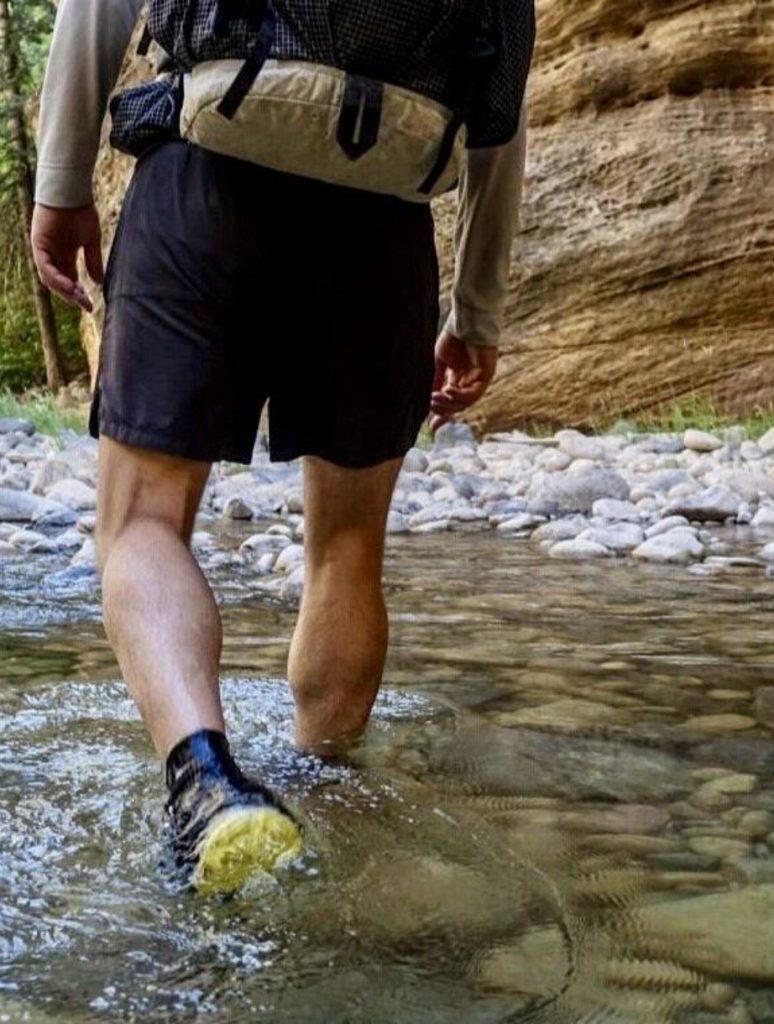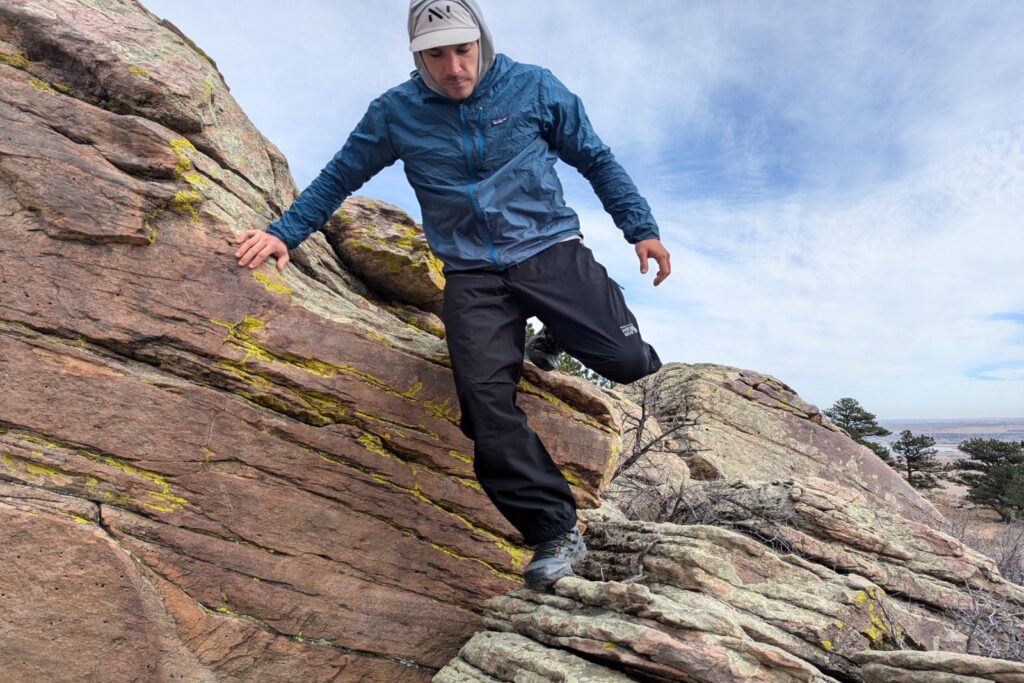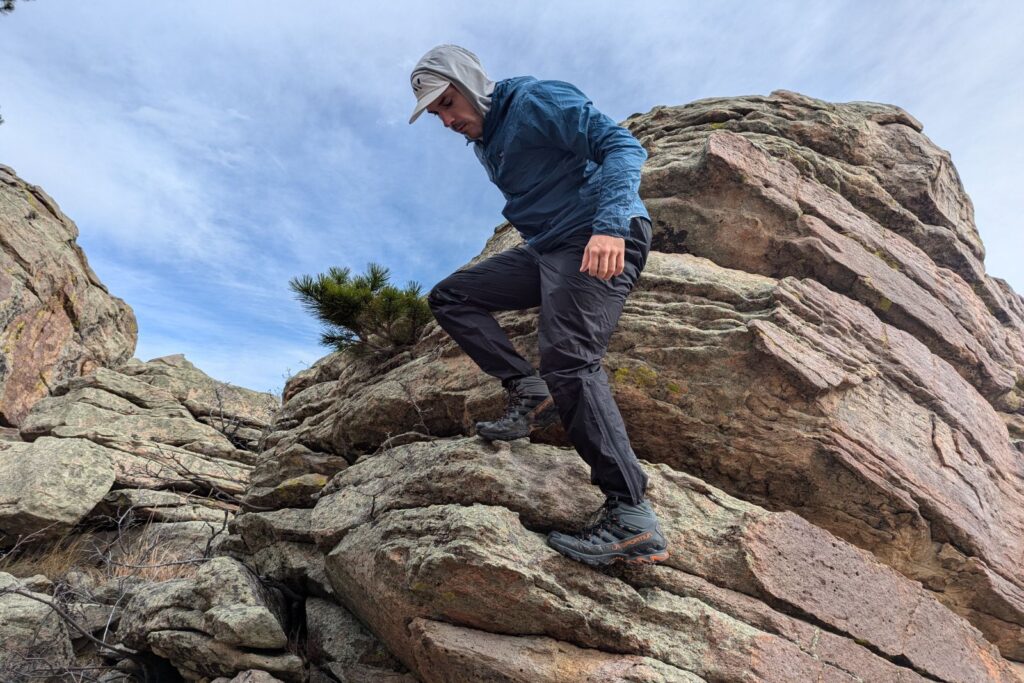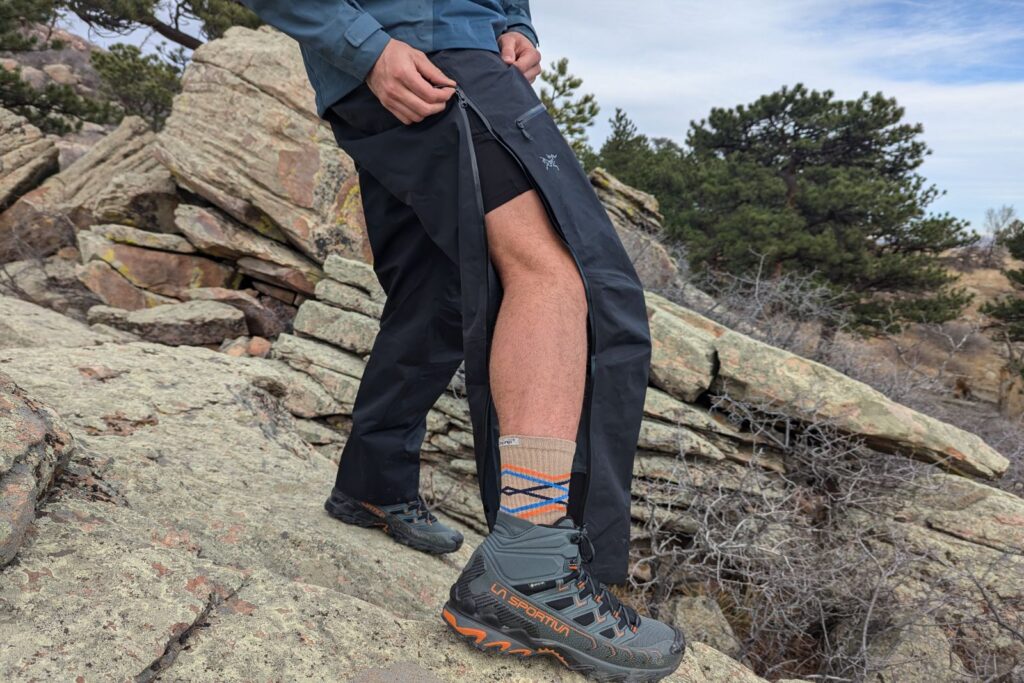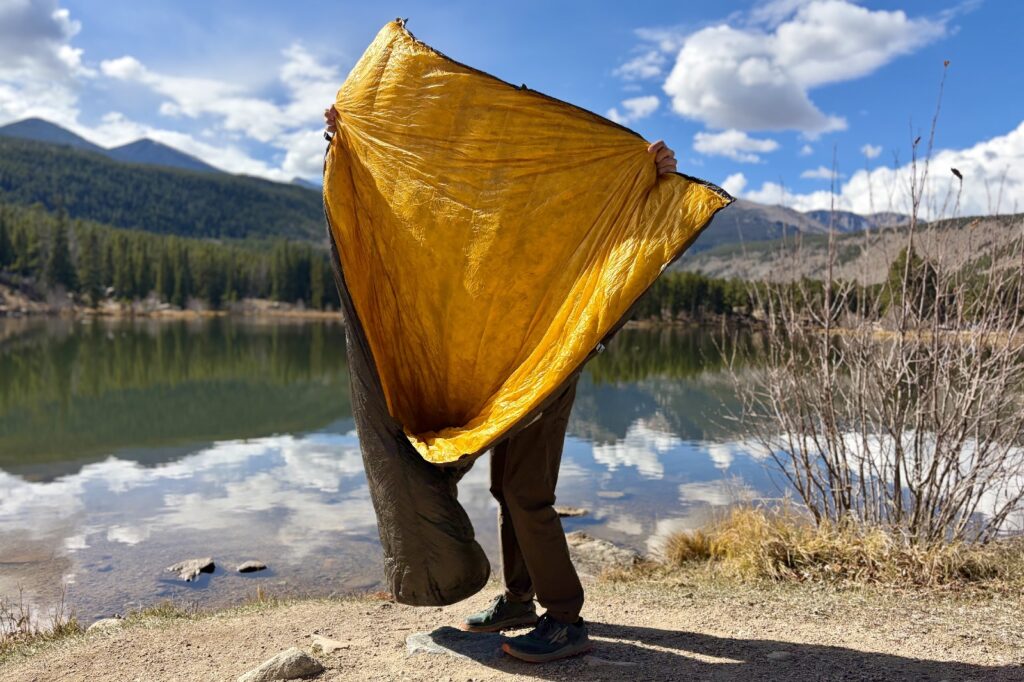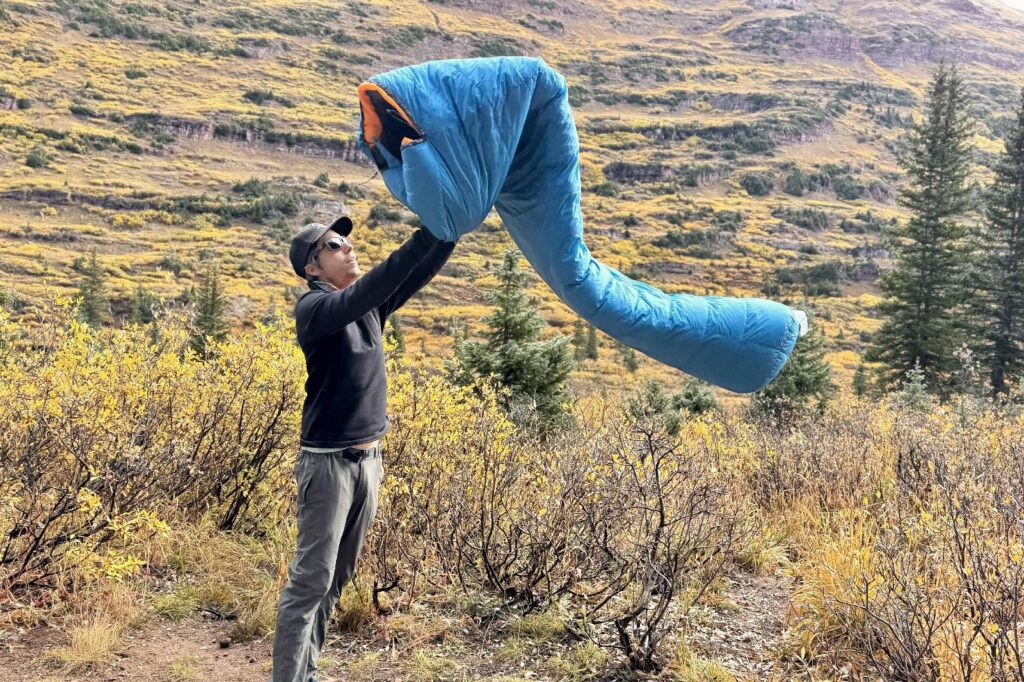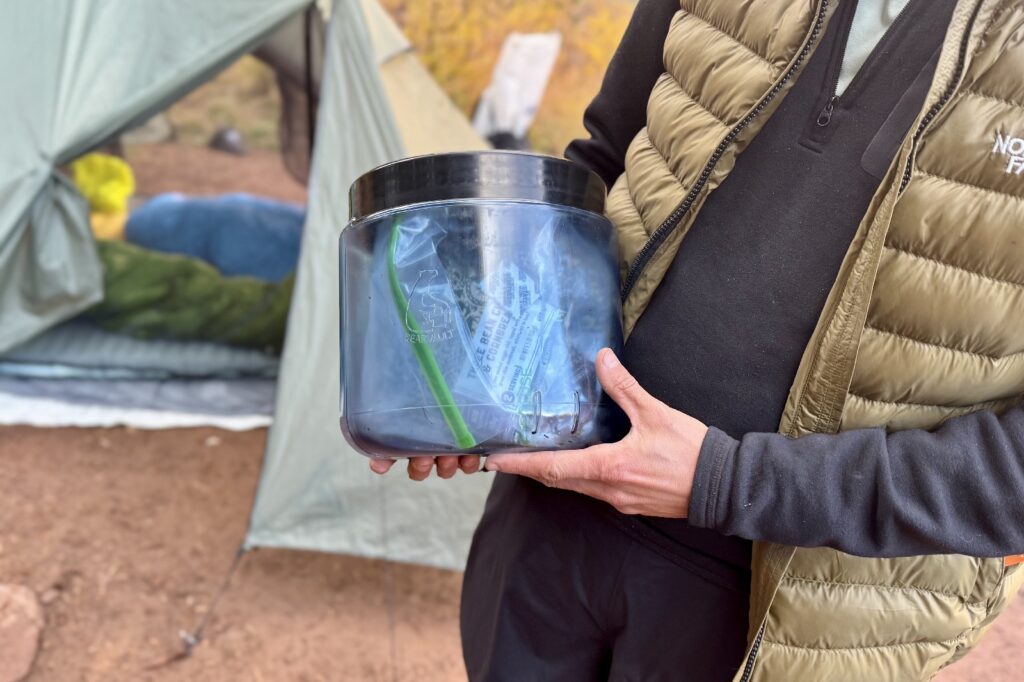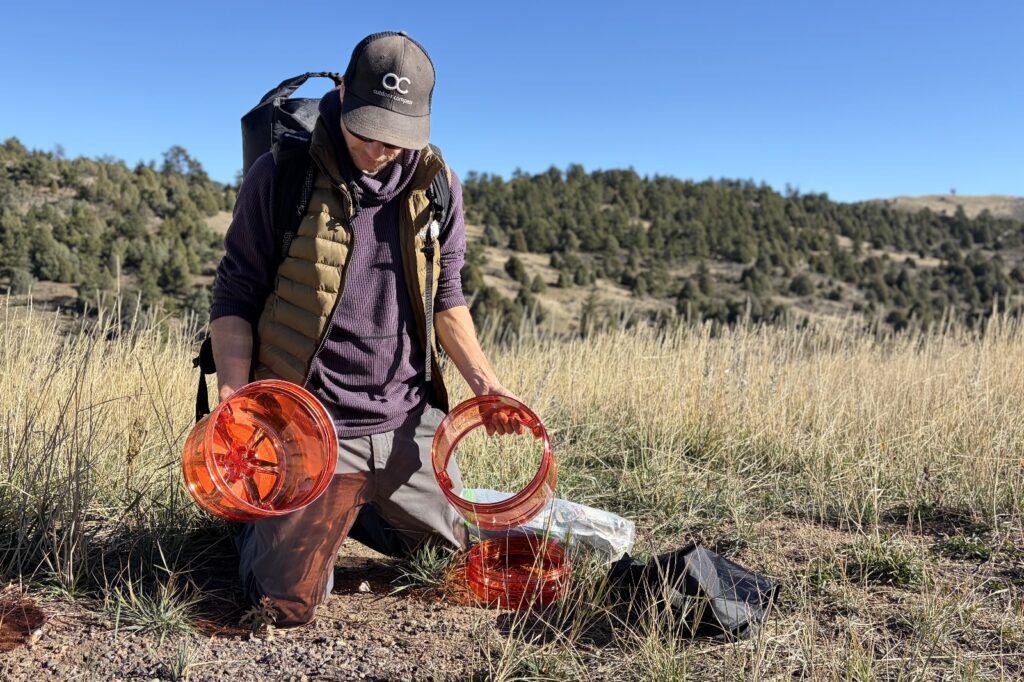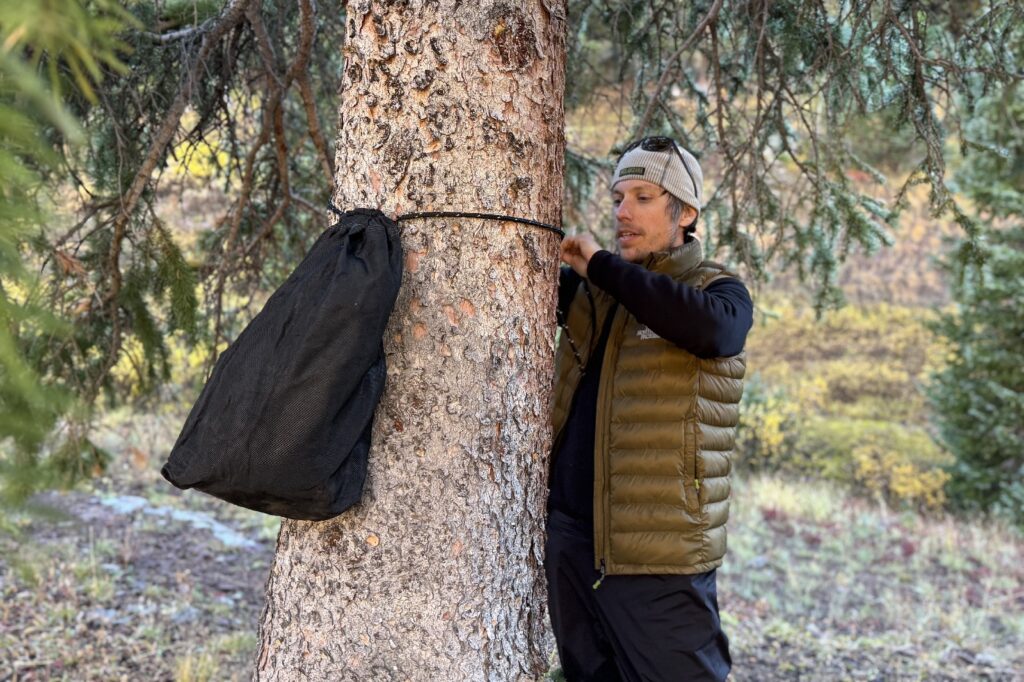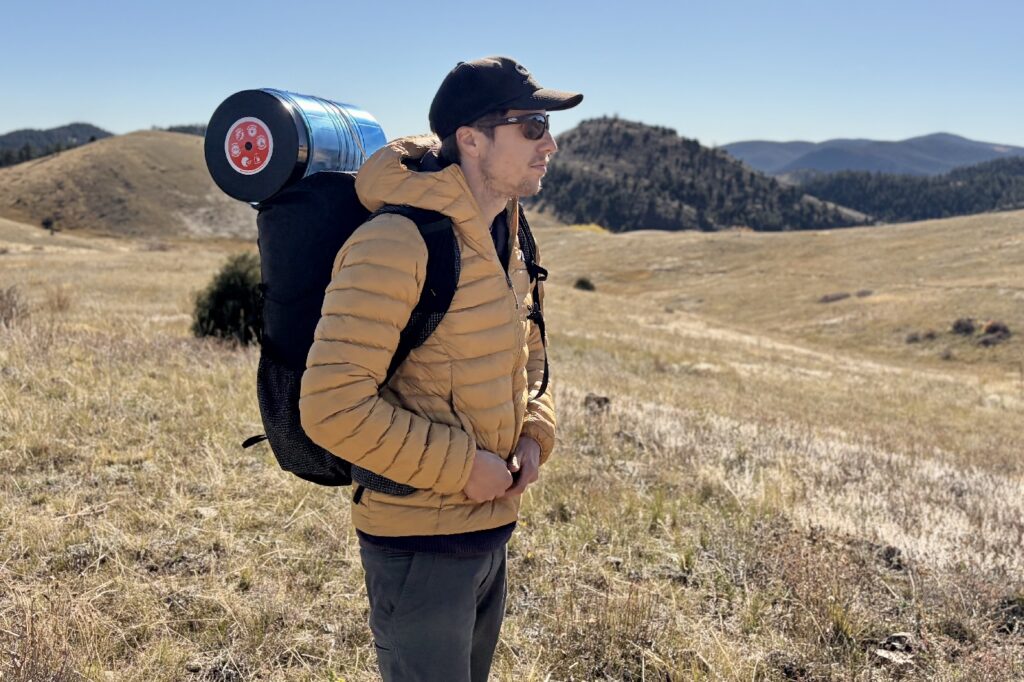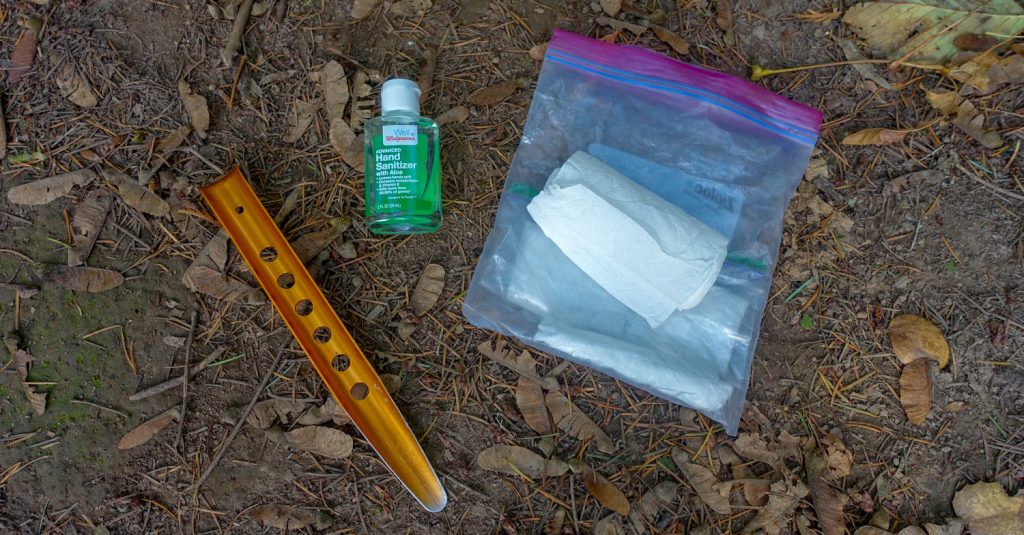
Bears do it, rabbits do it, heck, even lizards do it. So what’s so wrong with a human taking a turd in the woods and leaving it to the elements? What’s so special about human poop that merits burial? Well, it turns out there are a lot of good reasons why you should bury your scat. And sadly, improperly buried human waste (and soiled toilet paper) is by far the most common form of pollution we find in the wilderness.
Last year, more than 2 million people added hiking and backpacking to their list of hobbies. About 63 million people hiked last year alone (according to the Outdoor Industry Association’s executive report). So, we all must use a responsible and safe method for pooping in the woods. It’s a health hazard if we don’t #2 like a pro in the wilderness.
According to Leave No Trace, proper disposal of human waste is important to avoid pollution of water sources, minimize the possibility of spreading disease, and maximize the rate of decomposition. But it’s also just plain gross to hike around an area where human feces and pieces of used toilet paper are spread all over the place.
In this article, we give you all the nuggets on how to poop in the woods properly. If you follow our guide, you will have a sanitary and pleasant wild number two that doesn’t leave a trace or desecrate the wilderness.
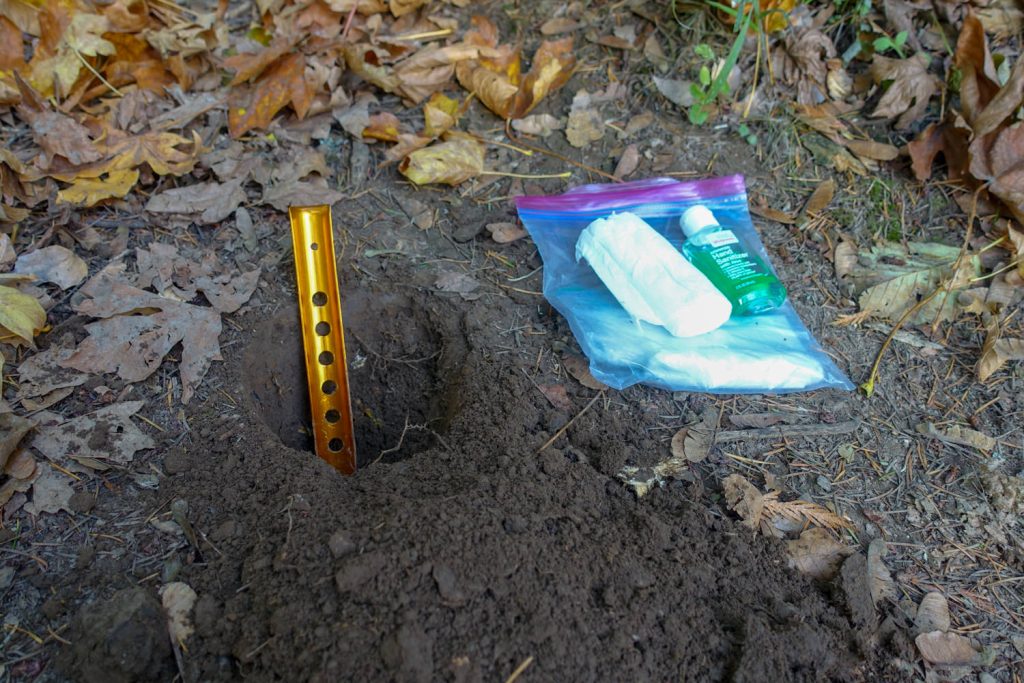
Why Your Wild Poo is a Problem
The problem of human waste in the outdoors is well researched. In the National Park Service article, “What to Do About Number Two? Insights from Decades of Human Waste Research and Management on Mount McKinley,” glacial geologists are monitoring and trying to manage human waste on North America’s tallest summit, Denali (20,310 feet).
The most straightforward route is inundated with poo bags that climbers and hikers pitch into crevasses en route to and from the peak. Glaciologist Michael Loso says an estimated 88 metric tons of excrement are in crevasses on the Kahiltna Glacier, the busiest trail in the Denali Wilderness. That’s over nine full-sized cement trucks. Gross.
This is no “out of sight, out of mind” problem. Research shows this waste remains biologically active for decades and will re-emerge on the glacier surface (largely intact) within the next 50 to 200 years. Glaciers are always moving and melting faster than ever, so this waste is already contributing low but detectable levels of E. coli to downstream meltwater.
Not pooping on a glacier? You still need to dispose of your waste properly. Here are a multitude of reasons why improper human downloads are a growing problem in our wilderness areas:
- Our poop isn’t locally grown: Our poop has traces of things not found in nature, which can end up in the soil or be attractive to curious or starving animals.
- It can contaminate water: Heavy rain or snowmelt can send feces and pathogens into waterways, ponds, or even sinkholes that humans and animals use for drinking water. Studies show human waste is a major contributor to the prevalence of Giardia in wilderness groundwater. See Wyoming’s stunning Lonesome Lake’s contamination.
- People who don’t bury their poop also don’t pack out their toilet paper: It is trashy, and we are mad at you. Nothing is more disgusting than seeing used toilet paper in a “pristine” wilderness. Are you a well-meaning person who buries their TP? It still can come to the surface months or even years later due to frost heaves, erosion, or a curious critter.
- It can ruin someone’s wilderness experience: Camping near or accidentally finding someone else’s poop is just plain smelly and gross. That’s not the experience hikers are looking for when they head out for peace and tranquility in a beautiful backcountry location.

How To Poop in the Woods
Try not to wait until you’re “prairie doggin.” Dehydration, a hipbelt pressing on your poop shoot, and a diet your tummy isn’t used to, all can make your #2s a little less predictable.
Rushing into the woods will cause you to choose a subpar location and dig an insufficient cathole. This is how people accidentally contaminate water or expose other humans and wildlife to your emergency “sh*tuation.”
Pro tip: Try to poop once you are out of camp or while hiking if there aren’t any outhouses. The obvious places, ~200 ft away from trails, campsites and water, will be where 90% of other backpackers have pooped during their morning routine in camp. We’ve dug up someone’s cathole on accident before, and it’s horrifying.
Here’s a rundown of your options, and where and when to choose one over another:
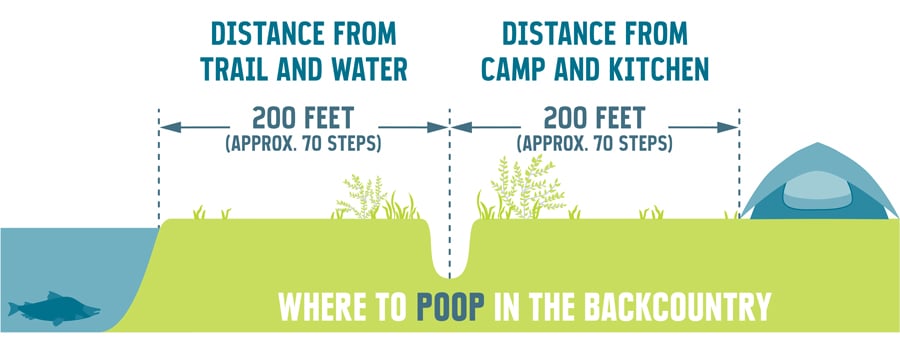
OUTHOUSE
When you’re staying in a backcountry campground and there’s an outhouse on site – use it. Many are engineered to be highly efficient composters and aren’t as stinky as you would expect. And some even have magnificent views! Using an outhouse while in the backcountry contains human waste so that park or wilderness management can remove and process it. This is the best practice for keeping high-traffic areas or sensitive landscapes healthy and clean.
CATHOLE BURIAL
When no outhouse is present, digging a cathole is the most widely accepted method of backcountry human waste disposal.
Catholes are easy to dig in most areas, especially below treeline, where there is ample organic matter. We highly recommend backpacking with a trowel (or a snow stake) to dig a good cathole.
This disposal method disperses the poo rather than concentrating it in one area. It also hides your waste, ensuring no one else encounters it. But a cathole’s decomposition rate can be pretty slow, so choosing the right spot will help speed the process up.
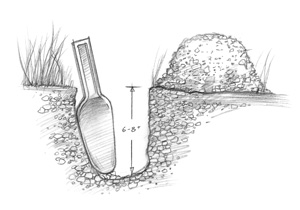
Here’s the basics: find an appropriate place at least 200 feet from all water sources, trails, or campsites. Use a trowel, snow stake, or rocks/sticks/hands to dig a cathole 6-8 inches deep (about the length of the trowel blade) and 4-6 inches in diameter. Never use a trowel near your poop.
When finished, fill the hole with the dirt you dug out and disguise it with a handful of rocks or dead vegetation (leaves, tree branches, etc). Don’t place a big rock on it, as that will make it harder for the heat of the sun to get to the poo to help break it down.
In our clean-up section, we discuss what to do with your toilet paper. Hint, don’t bury it in your cat hole.
If you have a panic poop: These are not fun, but we know they happen. If you have an emergency poop, get to the best spot you can and go. Then, carefully dig a hole nearby and use a stick/rock to move any feces/organic matter that touched it into the hole. Cover it, and make sure nothing that touched your brown town is left outside of the cathole.
CAT HOLES: LOCATION, LOCATION, LOCATION
Here are our suggestions for what to look for when it comes to finding the best place to drop trou in the outdoors:
A spot that is at least 200 feet (that’s about 70 paces) from all water sources, trails, or campsites.
A less traveled spot near thick undergrowth, downed timber, or on a hillside.
Several spots over a wide area – if you’re camping with a group in the same area for more than one night. As LNT states: “Don’t go to the same place twice.”
Look for a site with complex soil (dark and rich in color) or an elevated spot where water doesn’t normally travel during a rainstorm, and gets maximum sunlight (which aids decomposition).
In the desert, look for an area devoid of visible previous water flow (like dry sandy washes that flood during rainstorms). It should also have strong sun exposure (like south-facing slopes and ridge tops). The sun’s heat will penetrate desert soil several inches deep, so it can eventually kill pathogenic organisms.
Packing Out your poo
Packing out your waste is the most environmentally friendly method. That said, you’ll be hard-pressed to find many backpackers who use this method unless the wilderness area mandates it.
Mandatory “carry-everything-out” programs actually started back in the 1980s, and some sensitive areas like glaciers, deserts, or high-traffic places require this method of waste disposal to this day. For example, Mount Shasta requires you to pack out your human waste. You can also be ticketed for violating this regulation.
Commercial “WAG bags” (stands for waste alleviation and gelling) are a very useful product when you’re traveling in an area that requires you to pack out all human waste. They’re easy to use and not nearly as gross as you might think.
You take the inner bag out and poop directly into it. Then you seal that puncture-resistant bag and place it in the outer bag. There’s gelling powder that hardens the poo, neutralizes odors, and kills pathogens. Keep in mind that most people poop about once a day, so plan accordingly (and have a few extras) for your trip.
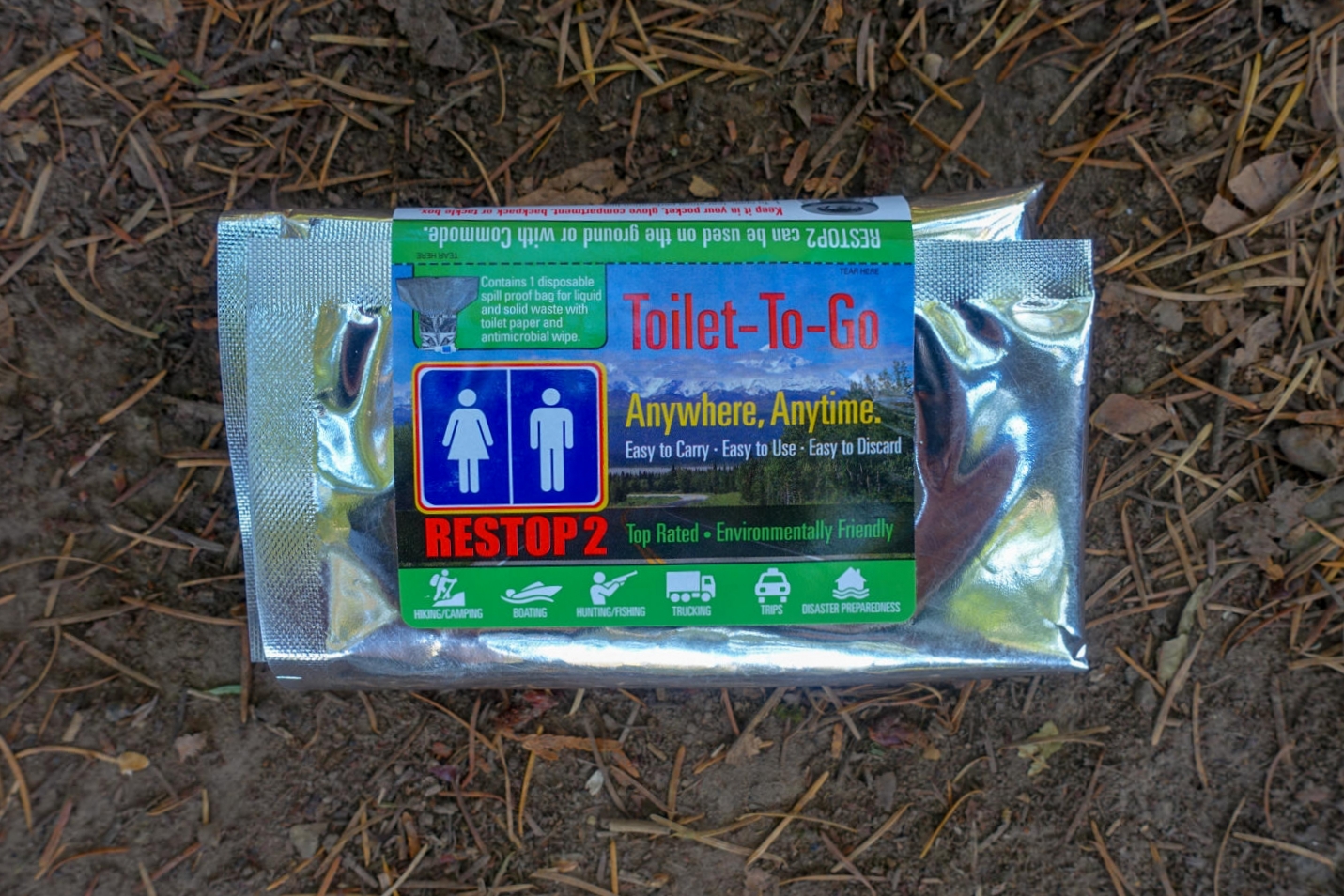
Pick A Position
Here are some common strategies for squatting and successfully depositing:
THE SQUAT – Place your feet apart to find a good balance, pull your pants down to your knees, and obtain a bottom-out low squat position. Use a hand to pull your pants forward to keep them out of the line of fire.
THE THRONE – Look for a tree on a slight hill and go to the uphill-facing side so that everything runs away from you. Plant your feet firmly, press your back against a tree (your thighs should be exactly parallel to the ground).
THE TRIPOD – Find a tree with a fairly slender yet sturdy trunk. Grab hold, grip it tightly, and lean back into a squat. Your feet should be near the base of the tree.
THE ASSIST – Look for a fallen log or a tree stump; you can basically sit down on it. Scoot back over it, hang your rear off it as far as you can without falling off, and go for it.

Toilet Paper and Clean Up
When it comes to truly leaving no trace, toilet paper should be packed out. However, there are a few other options out there that we will dig into.
PACK IT OUT
We like having a dedicated resealable Ziploc bag for our used TP. Just fold it in a way that doesn’t smear your doo doo, or use a couple of squares to encapsulate your used toilet paper. Otherwise, the bag will get nasty and stinky.
BURN IT
While this was a generally accepted form of LNT, it’s no longer recommended because humans are…not the most trustworthy when it comes to fire (this failed TP burn caused 27,000 acres to go up in flames).
If you go with the burn technique, just be 100% certain you don’t set the woods on fire or violate fire restrictions. TP is super lightweight, and its ashes tend to get airborne. Treat it like a campfire. Remove any fuel sources aside from the TP, have water on hand, and once you are done, pour water on the ashes to ensure it is completely extinguished. Also, try to make sure it’s protected from the wind. It’s best to scrape away leaves/needles and other tinder, and light it on soil/rock, and have a stick or rock to hold it down.
Finally, don’t cover it. Fires can smolder under sand, peat, and dirt. Roots can ignite underground, so don’t cover the ashes. We like to wash our hands over the ashes.
BIDET
If you’re a pooper who finds toilet paper barbaric, enter Happy Bottom’s Portable Bidet. It weighs 2.8 ounces and gets the job done. Read the reviews, people are hyped!
NATURE’S TP
When used correctly, natural toilet paper (leaves, smooth rocks, snow, etc.) is just as sanitary as toilet paper. Is it the best option environmentally? That depends on which expert or land manager you ask. It’s a skill to figure out the right shapes, sizes, and textures. And you need to collect it before you rush to dig your cathole because sometimes, what’s in arm’s reach is a bit prickly. The biggest issue with natural materials is the risk of contaminating your hands. It can be difficult to clean and remove, especially without easy access to hot water and soap.
DON’T FORGET SOAP/WATER or SANITIZER
Whatever you do, don’t forget to clean your hands thoroughly after you finish up. Hand sanitizer is an essential tool for any backcountry trip and should be used often.
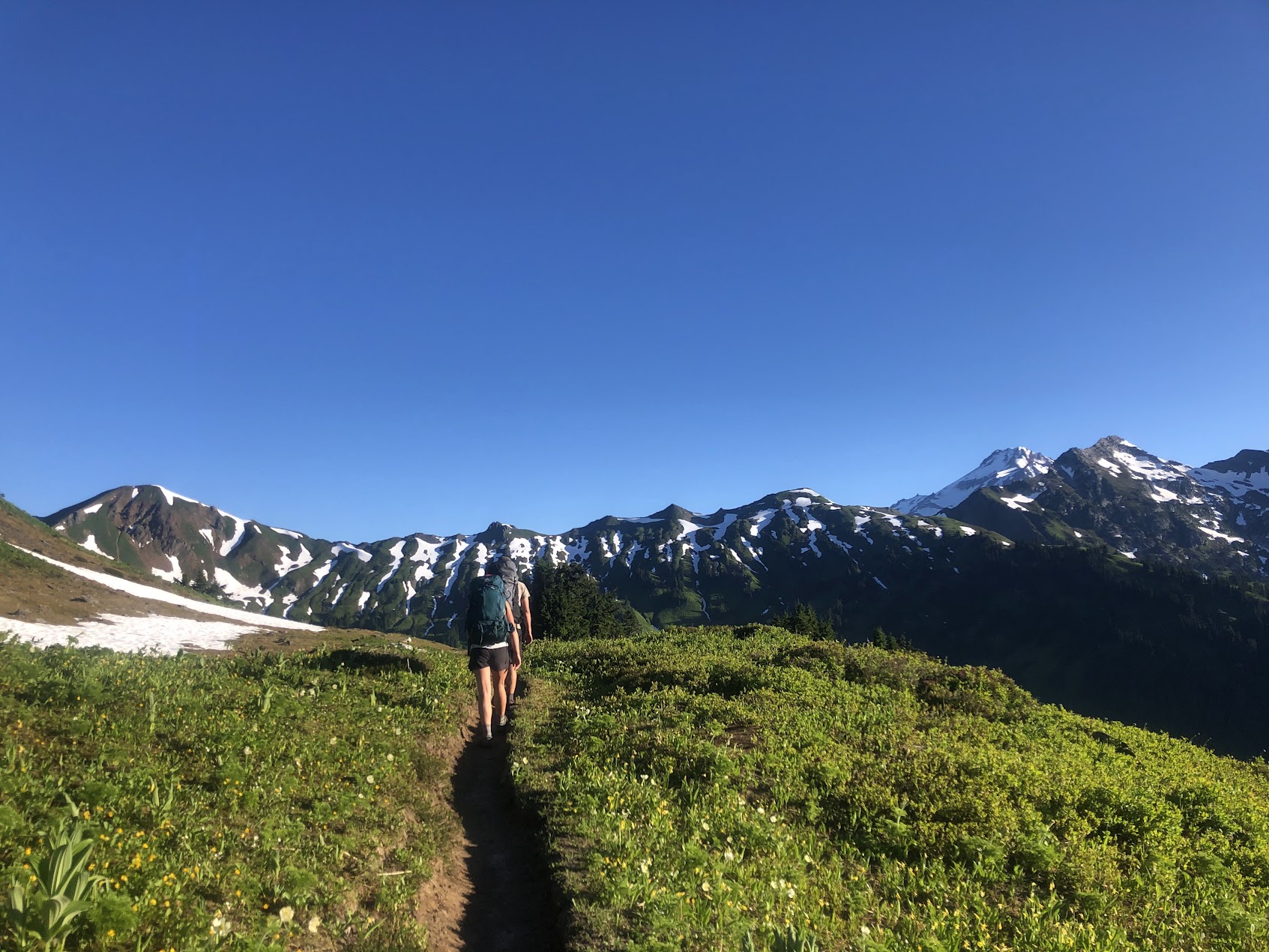
What About the “Red River” or Urine?
Human urine is much less dangerous than human fecal matter. That said, human urine can still cause problems in the backcountry. For example, some animals absolutely crave salt (goats and deer, for example). So it’s fairly common to see them change their natural behavior to hang around areas where humans frequent. When they find human urine, they go nuts for it, digging up the dirt, damaging plant life, and often becoming a big nuisance.
This is another important reminder that even small human actions have impacts on the natural order, so here are some good guidelines to follow:
- For urinating, pick a spot 200 feet away from campsites and water sources as a courtesy to other humans.
- Pee on a large flat rock, gravel, or pine needles whenever possible. This will help disperse the urine and keep it away from vegetation, which salt-loving animals may destroy.
- Another way to reduce pee impacts is to dilute urine with a spray of water from a water bottle to help minimize negative effects.
For those lucky enough to be bleeding during a camping/backpacking trip, pack out used products and dispose of the contents from your menstrual cup the same as urine.

Conclusion
You love the outdoors. That’s why you’re out there, and probably why you’re reading this post. So please help keep our wilderness areas pristine for years to come. Improperly buried human waste is not only extremely gross, but it’s also one of the biggest pollution problems our wild places are facing.
So please, always backpack with a sturdy trowel, dig deep catholes, use biodegradable toilet paper, and either bury your TP thoroughly, or pack it out and throw it away. If we all do our part, we can help keep our parks beautiful for generations to come.


